Iso-Area Triangle Twists (CFW 68)
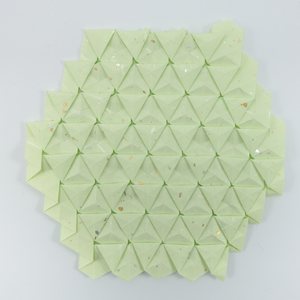
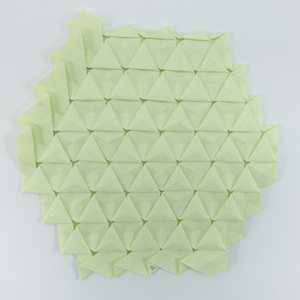
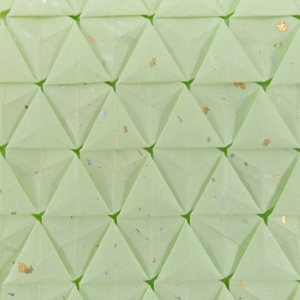
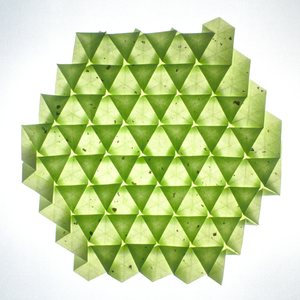
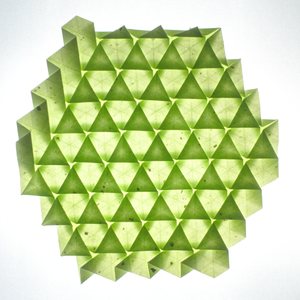
This “translucent design” by Shuzo Fujimoto is an example of iso-area tessellations: both sides have the same pattern (except for rotation). The point below the center of each triangle twist on one side is the meeting point of three triangle twists on the other side. In back-light this means that behind each point where three triangles meet, a shadow of a triangle from the other side of the tessellation is visible. While iso-area, this pattern is not a flagstone: on each side there are two “layers”, with every other triangle being in the top layer and every other in the deeper layer.
This fold was made with a sheet of Washi with glittering sprinkles inside. Note how the tessellation’s molecules are offset from the grid’s center of symmetry, resulting in asymmetric margins on different sides. Since this is an iso-area tessellation, the descriptions of pictures as being the front or back of the model are due to the paper being different on the two sides, and the fact that even an iso-area tessellation differs on the two sides when folded from a finite grid.
Comments